HISTORY
Evolution of the law relating to “Bribery”
Before 1505 A.D.
Sri Lanka had a monarchical history before the invasion of Portuguese in 1505 A.D. Kings ruled the country according to a well established comprehensive legal system with un-codified laws. Hierarchy of officials involved in adjudicating justice and administration of the country were not specifically remunerated for their services. Hence, it was a common custom for the citizens to show gratitude by offering a present as a token of respect to the officials for their services. That was not considered “bribery”.
1505 A.D. - 1656 A.D.
1656 A.D. - 1796 A.D.
1796 A.D. - 1941 A.D.
1941 A.D. - 1954 A.D.
1954 A.D. - 1994 A.D.
1994 A.D. - up to date
Key features of legislative development
Penal Code Ordinance, No. 02 of 1883
- The offence as spelt out in the Penal Code was, a public servant accepting or obtaining a gratification as a motive or reward in connection with a matter in respect of an official act. (Chapter IX, Sections 158) Sections 159,160 covers go-betweens and section 161 abettors.
Solicitation though was not an offence per se was punished as an attempt to commit the offence of bribery. - A giver of a gratification was considered an abettor and accordingly was punished for abetting for the offence.
- Gratifications solicited, accepted or given by or to public servants in connection with public justice, to screen an offence or an offender, are dealt with by Chapter XI, sections 210,211 and 212.
- Any person who accepts or obtains a gratification to influence a public servant also was punishable.
- This law did not prohibit a public servant from taking a bribe when the connected act was not within his official power to perform. (Zoyza v Subaweera (1941) 42 NLR 357)
- In the same way when the public servant who did accept the bribe had no duty to perform the connected act, the giver also was not liable for abetting despite of any favourable position enjoyed by him. (Thennakoon v Dissanayake (1948) 50 NLR 403)
- The definition of “public servant embraced virtually all public officers including the judicial officers”. Neither the head of the country nor the Members of the Legislature, people’s representatives were made liable for bribery under the Penal Code.
- Offences were investigated by the police and were prosecuted by the Attorney General like any other offence.
- The offences were non-cognizable, bailable and non-compoundable under Criminal Procedure Code, No. 15 of 1898 and under Administration of Justice Law, No. 44 of 1973.
- Attorney General’s sanction was required to initiate proceedings into the above offences. (section 135(1)(b), Code of Criminal Procedure Act No. 15 of 1979)
- Need of a separate law on the subject was spelt out by courts in time to time. (Thennakoon v Dissanayake (1948) 50 NLR 403)
- Similar concern was expressed by the Commissions warranted by the executive to probe into selected corrupt activities involving politicians and public servants.
- Receiving of gifts by public servants if not amounted to a bribe was not an offence under the Penal Code. However, receipt of a gift by a public servant other than a gift from a personal
friend is prohibited under the Establishments Code, Chap. XLVII, s. 2:1.
Fact finding Commissions prior to the Bribery Act
Bribery Act No.11 of 1954
Bribery (Amendment) Act, No. 40 of 1958
Commissions after the Bribery Act
Bribery (Amendment) Act, No. 2 of 1965
Bribery (Amendment) Act, No.7 of 1965
Bribery (Amendment) Act, No. 38 of 1974
Declaration of Assets and Liabilities Law, No 1 of 1975
Bribery (Amendment) Act, No. 9 of 1980
Bribery (Amendment) Act, No. 20 of 1994
Commission to Investigate Allegations of Bribery or Corruption Act No. 19 of 1994
19th Amendment to the Constitution







